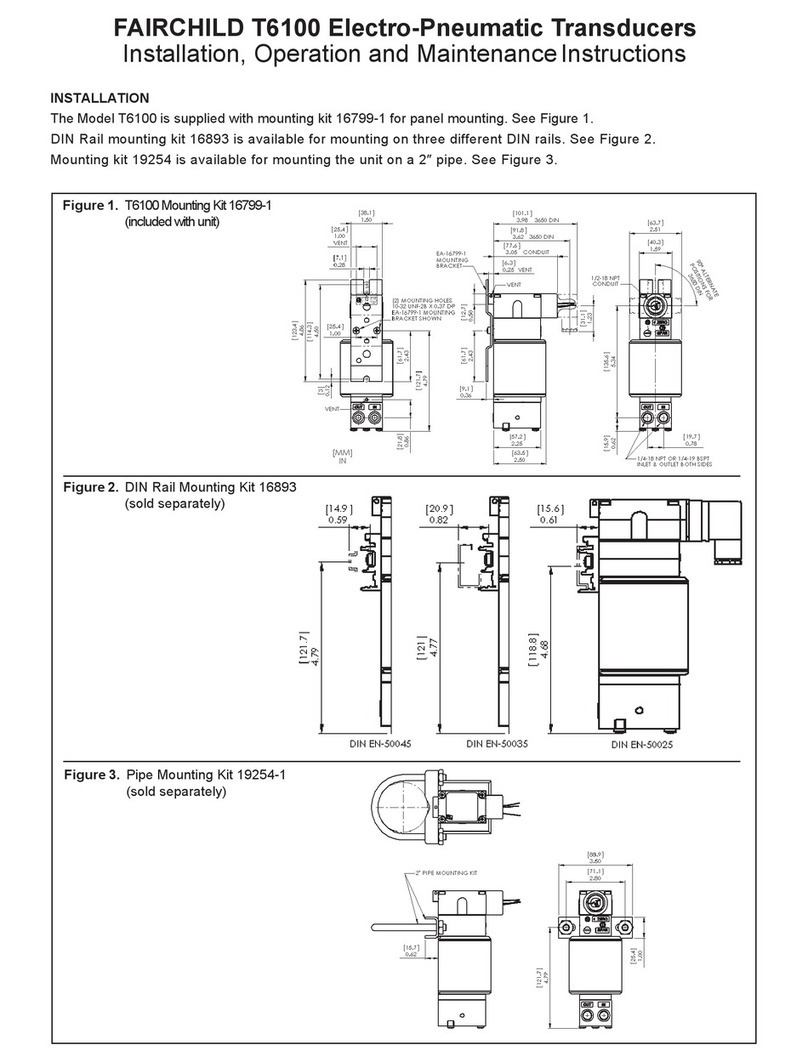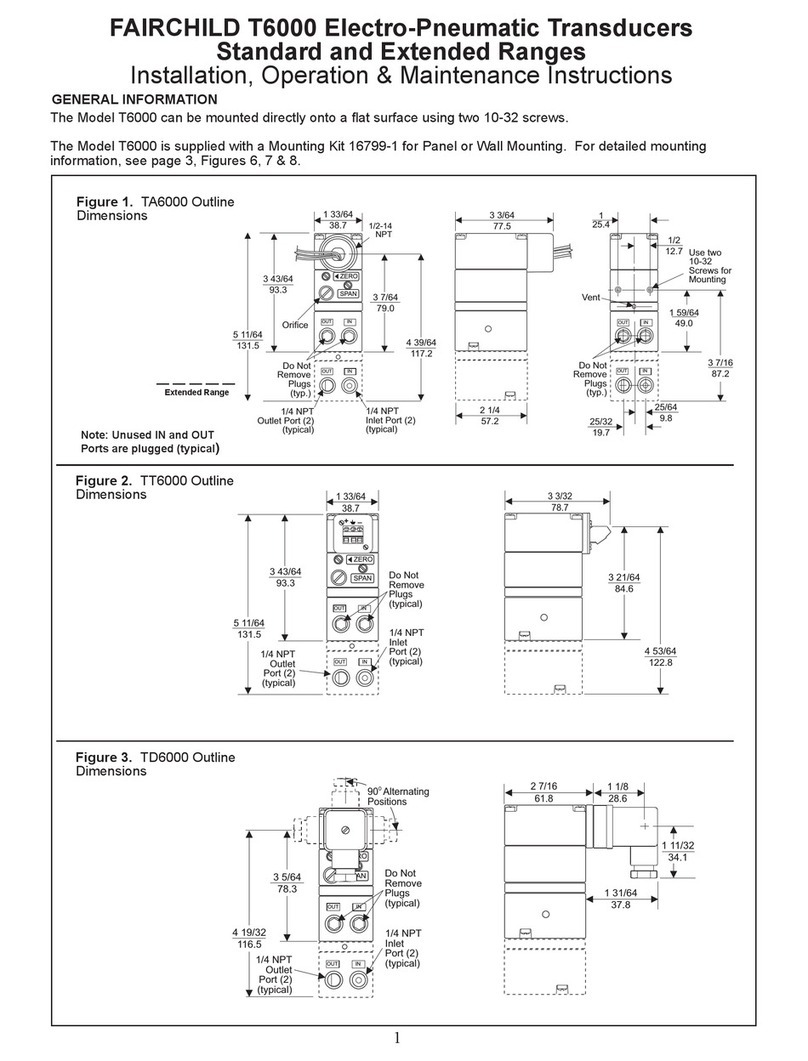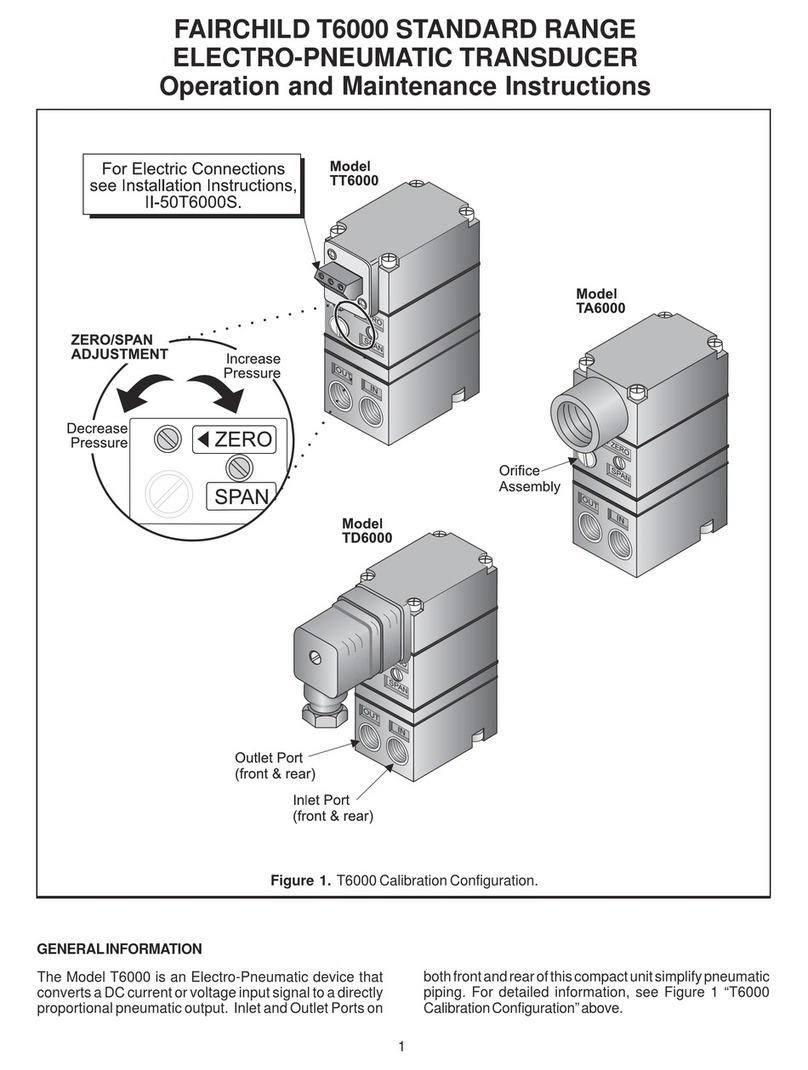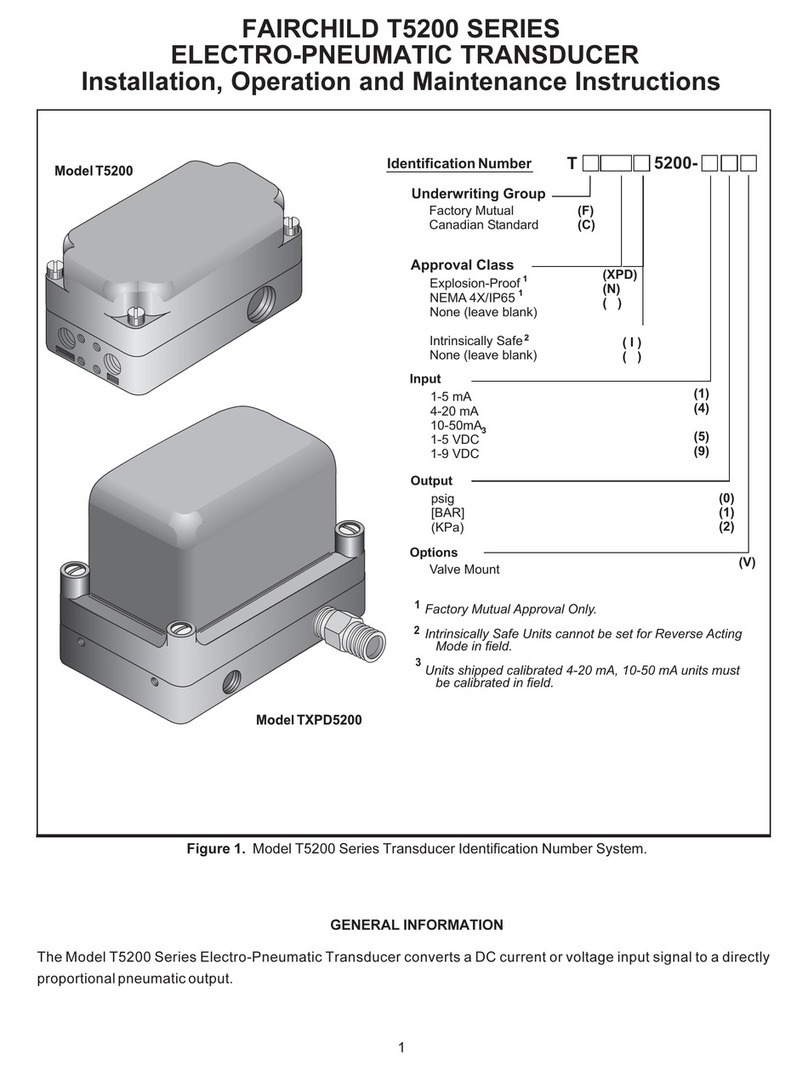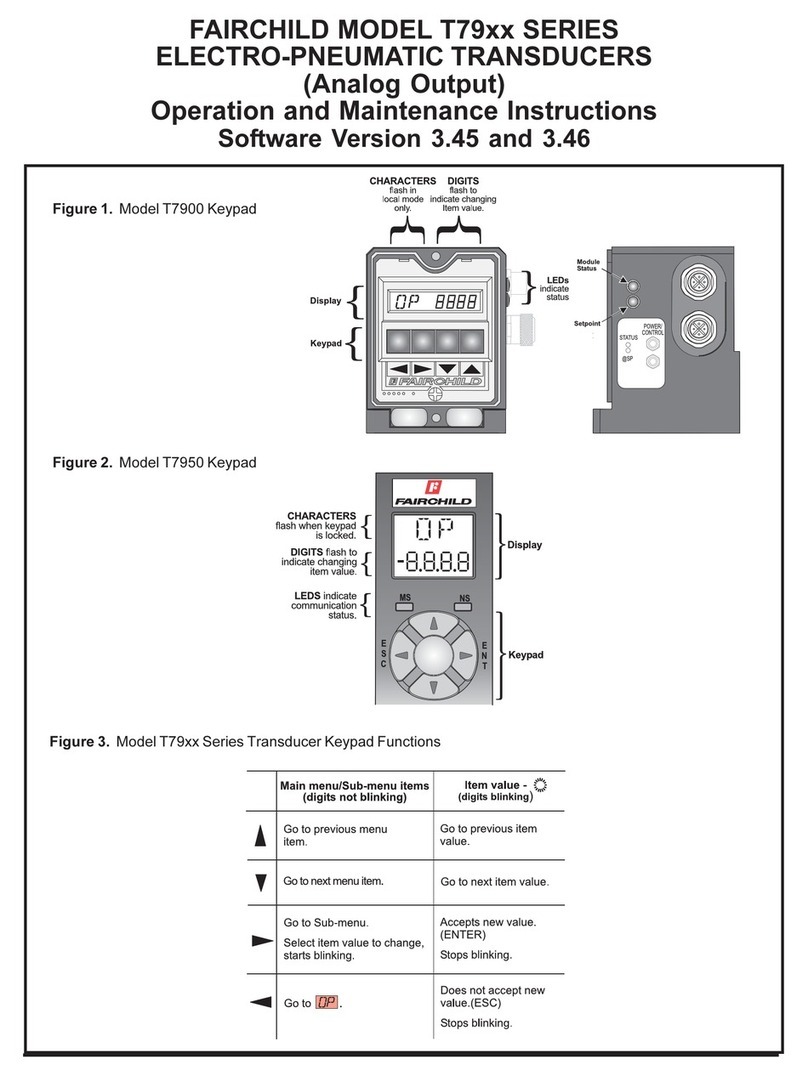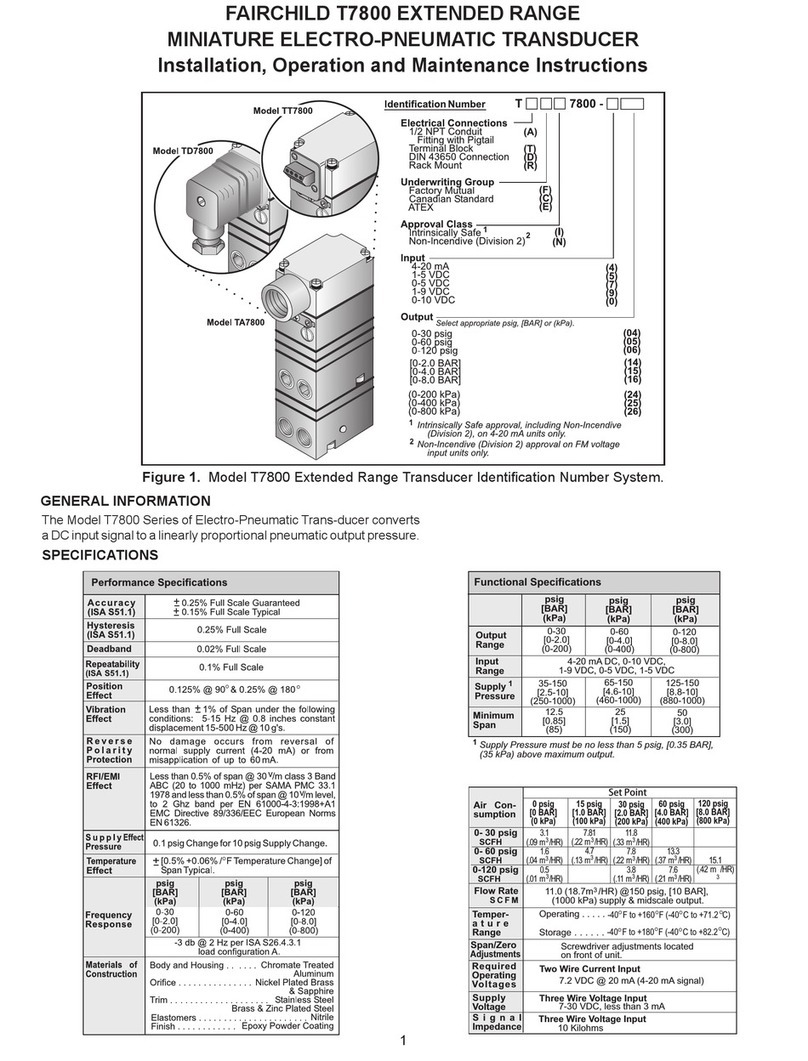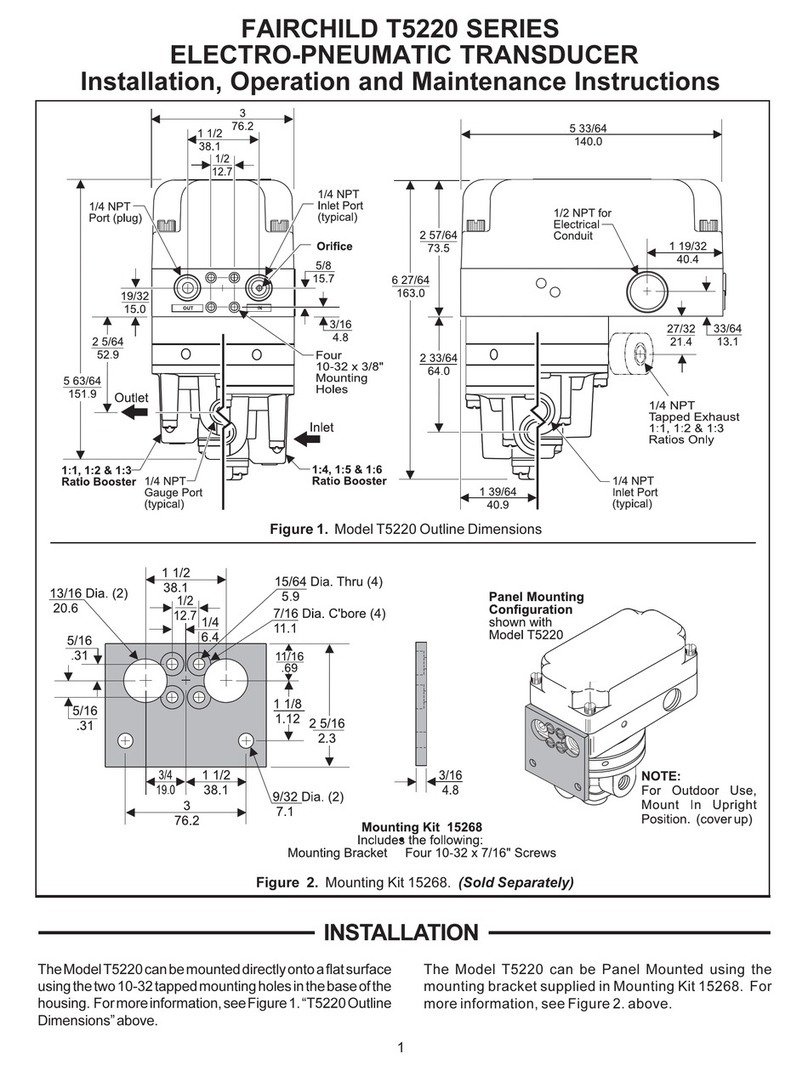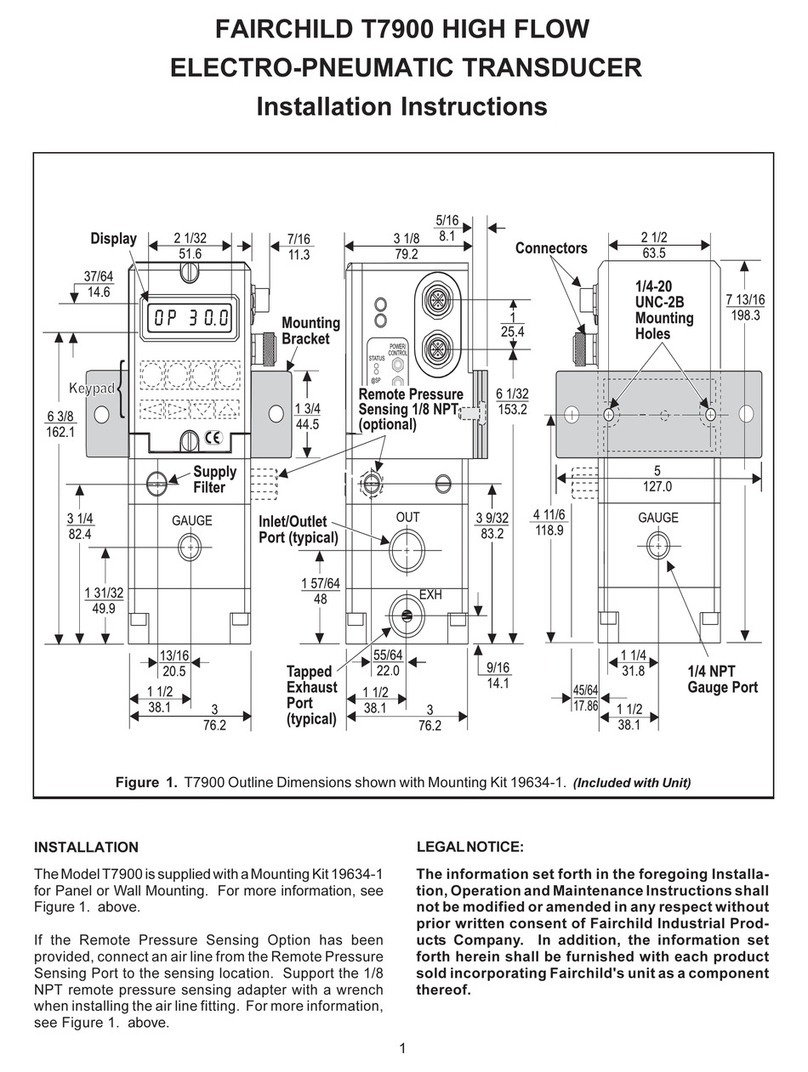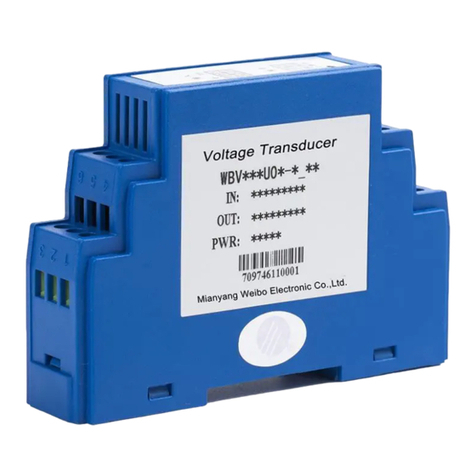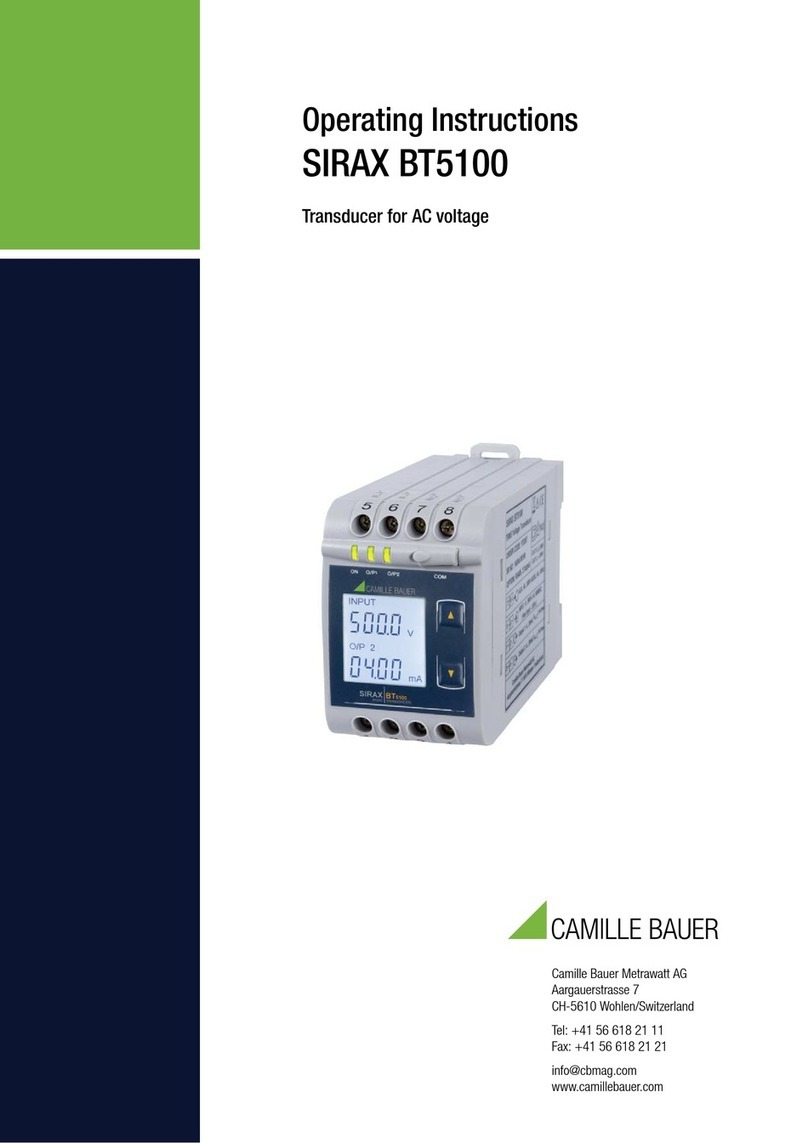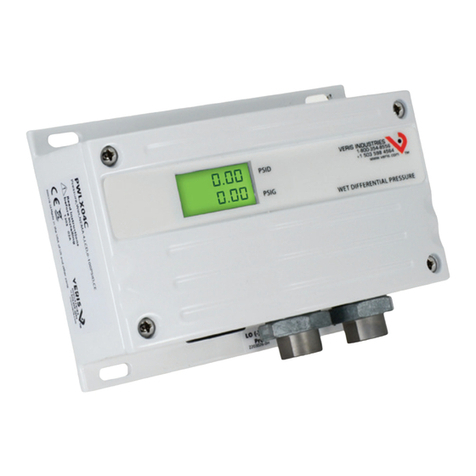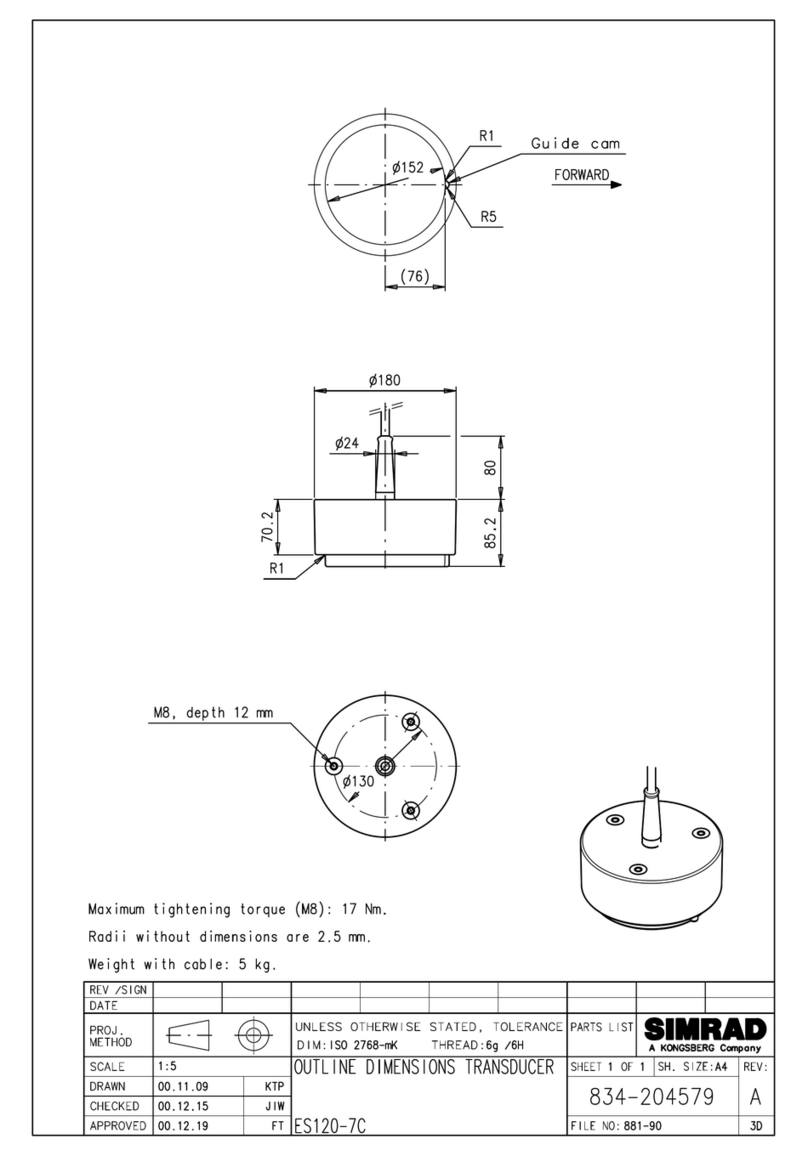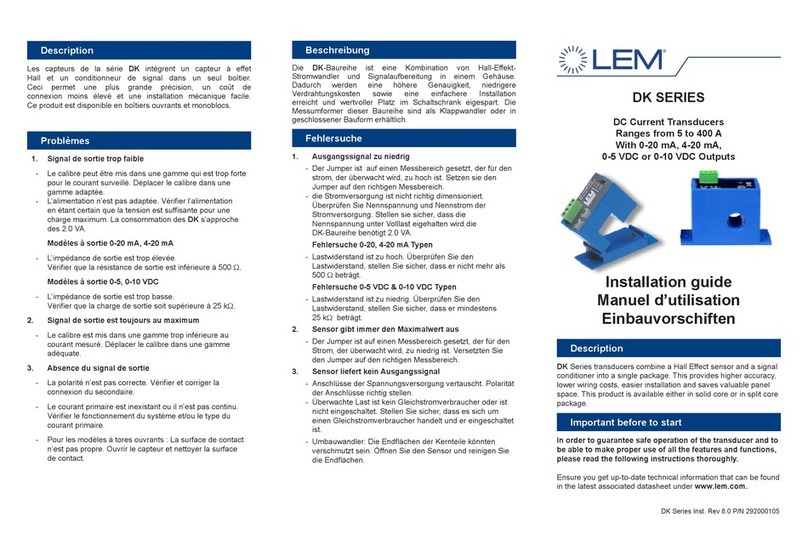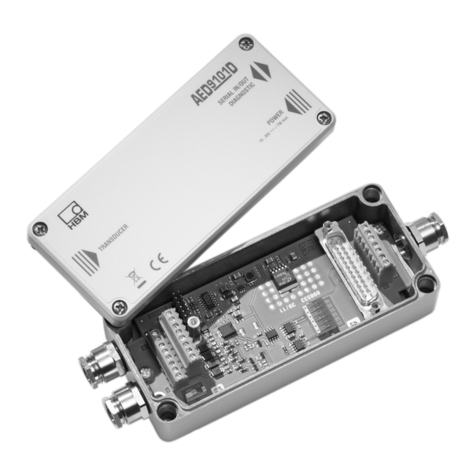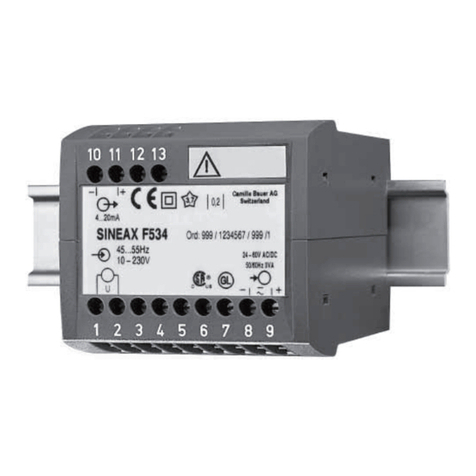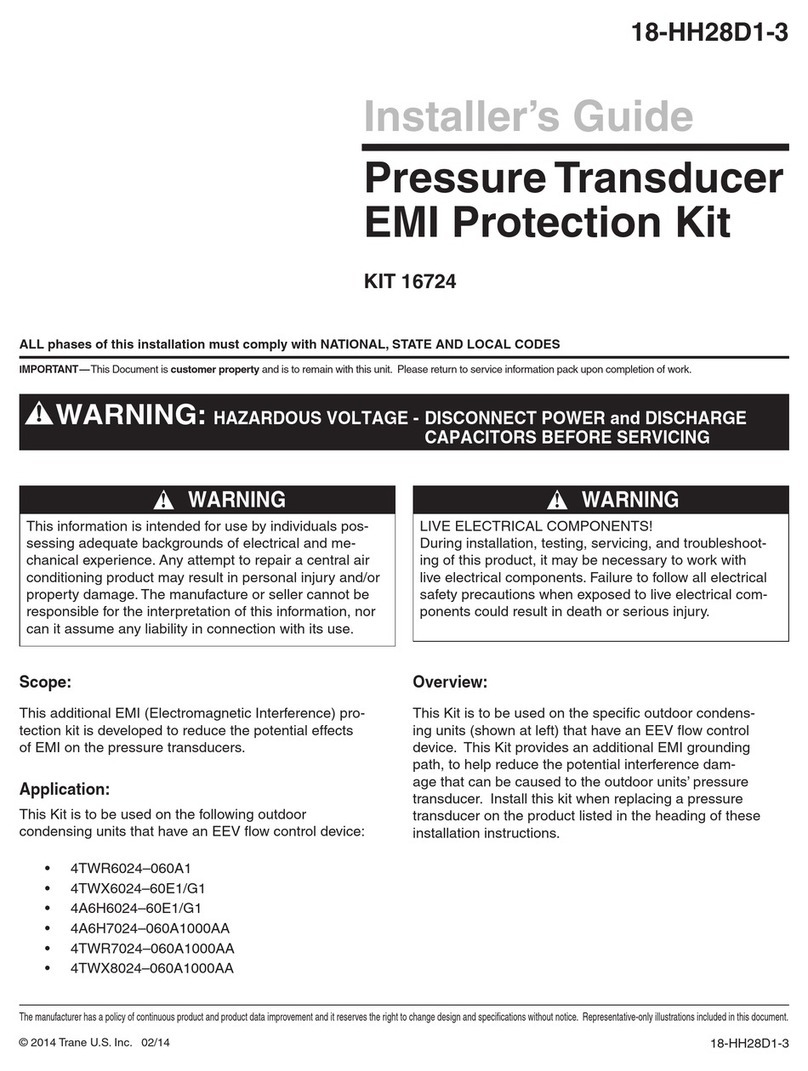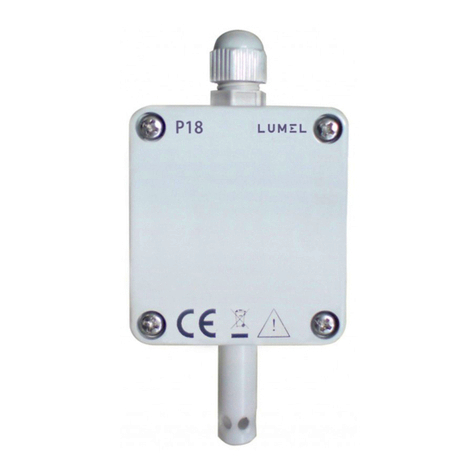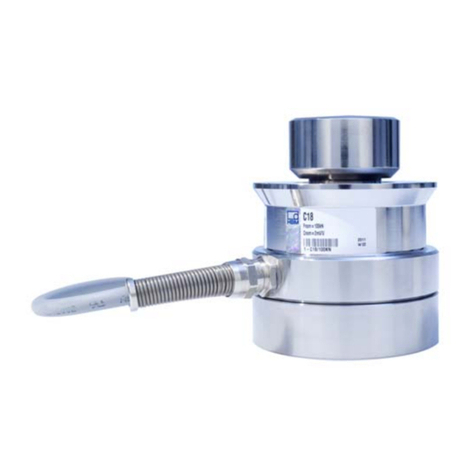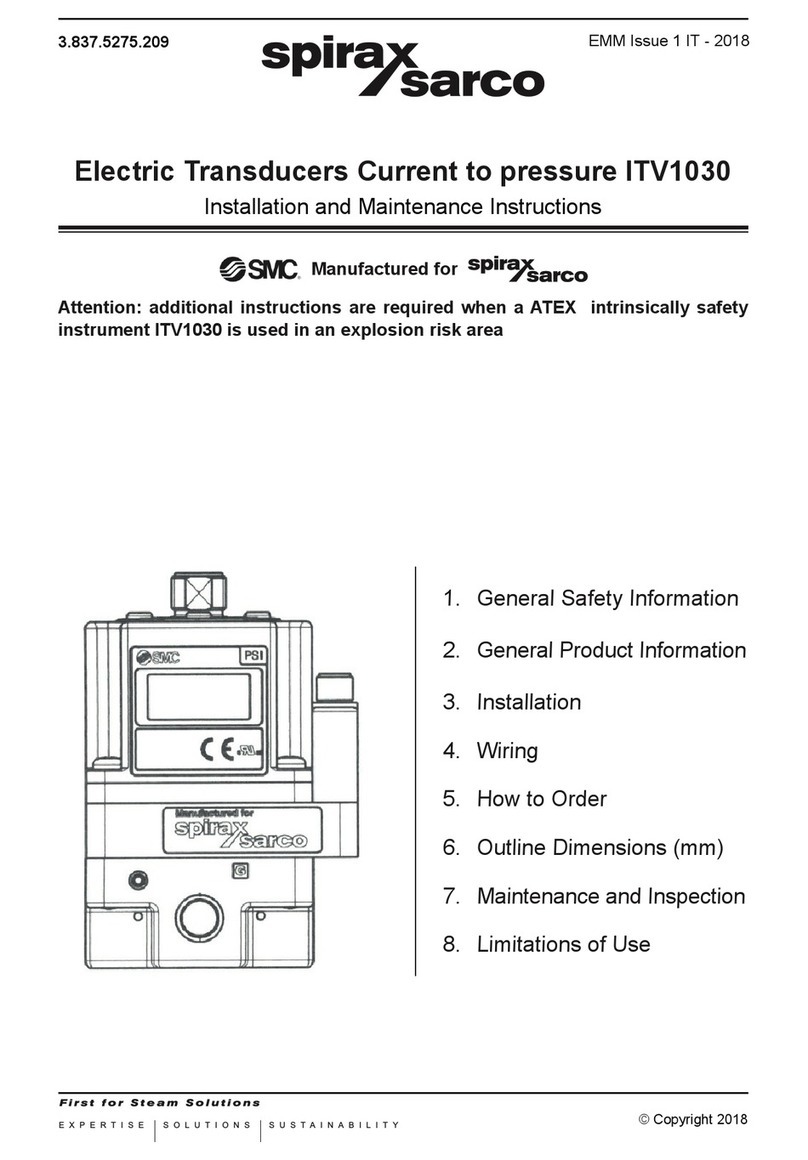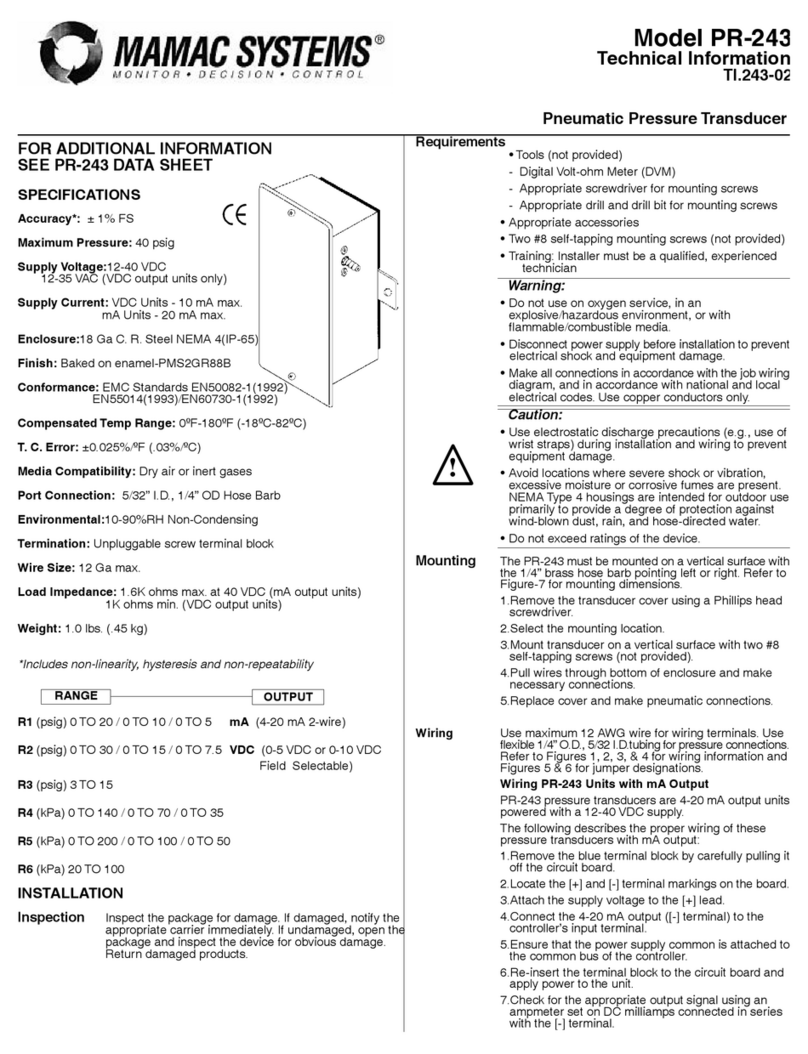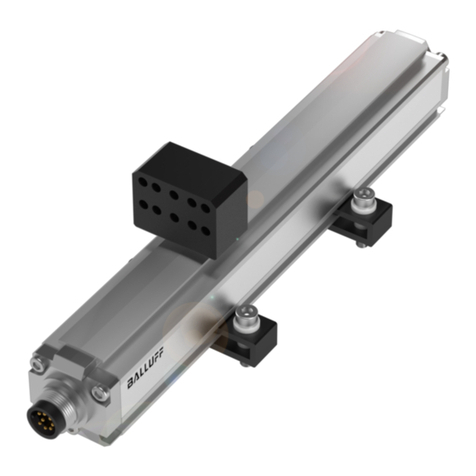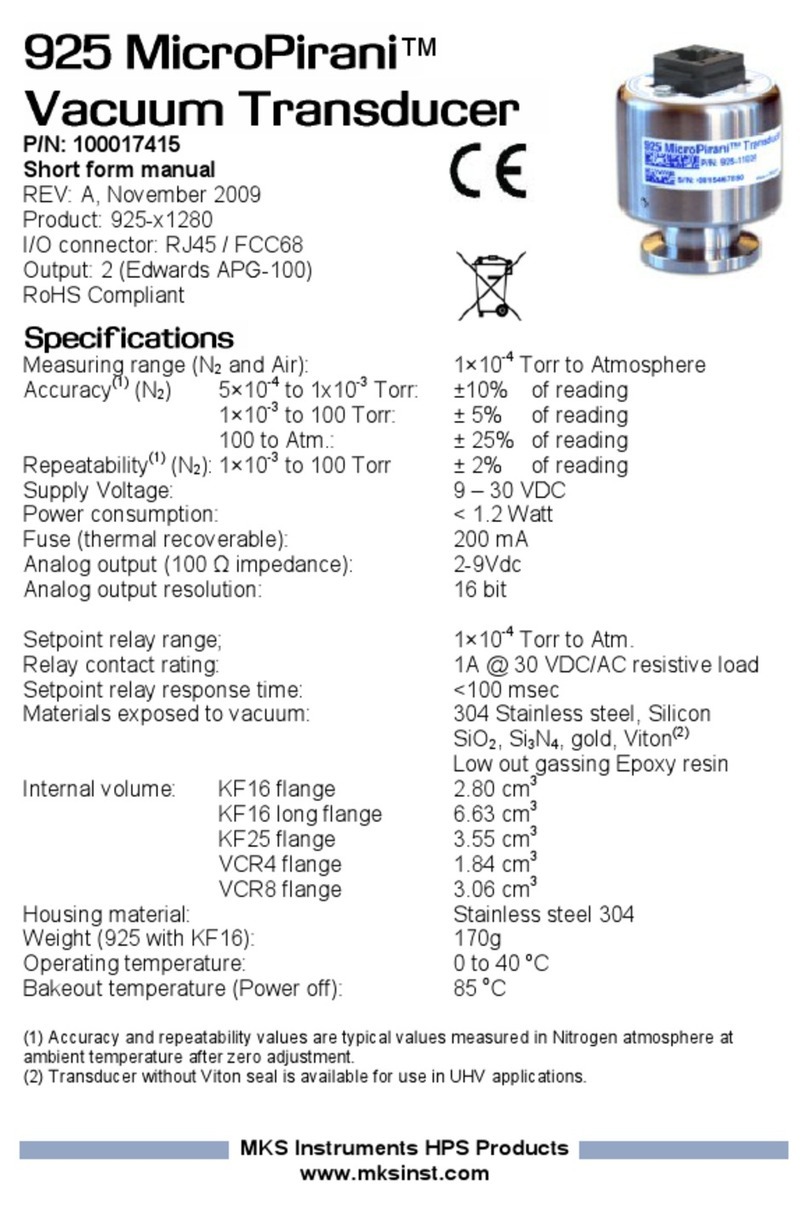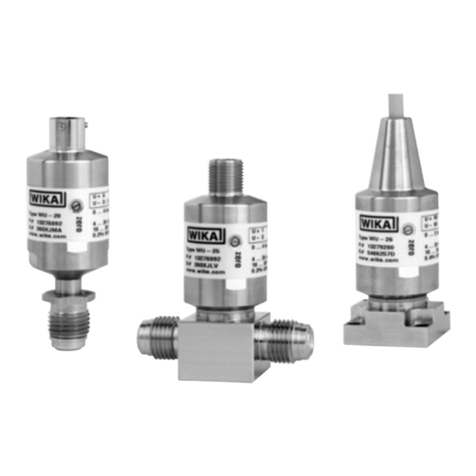
7
SPLIT RANGE OPERATION
Lo/Hi Span Adjustment
1.
Forward Acting Mode Adjustment
2.
• Forward Acting Calibration - Zero
3.
• Forward Acting Calibration - Span
4.
5.
Reverse Acting Mode Adjustment
NOTE:
6.
• Reverse Acting Calibration - Zero
7.
• Reverse Acting Calibration - Span
8.
9.
Set the Lo/Hi Span switch to the Lo position for 0-15
psig, 15-30 psig, 0-30 psig, 30-60 psig, 0-60 psig, or
60-120 psig, output range. For more information,
see Table 4. “Split Range Operation” on page 8.
Set Fwd/Rev Mode Jumper to the Forward position.
Apply the minimum input signal and adjust the Zero
screw for minimum output pressure.
Apply the maximum input signal and adjust the Span
screw for maximum output pressure.
Repeat steps 3-4 until the desired output range is
obtained.
Set Fwd/Rev Mode Jumper to the Reverse position.
Apply the maximum input signal and adjust the Zero
screw for minimum output pressure.
Apply the minimum input signal and adjust the Span
screw for maximum output pressure.
Repeat steps 7-8 until the desired output range is
obtained.
FULL RANGE OPERATION
Lo/Hi Span Adjustment
1.
Forward Acting Mode Adjustment
2.
• Forward Acting Calibration - Zero
3.
• Forward Acting Calibration - Span
4.
5.
Reverse Acting Mode Adjustment
NOTE:
6.
• Reverse Acting Calibration - Zero
7.
• Reverse Acting Calibration - Span
8.
9.
CALIBRATIONS / ADJUSTMENTS
Equipment Required for Calibration:
•Pneumatic Supply capable of delivering up to 150 psig.
•Current Supply capable of delivering up to 60 mA.
•Pressure Gage capable of a digital readout up to 150
psig with an accuracy of .1%.
• Digital Volt Meter capable of a readout up to 60 mA with
an accuracy of .02%.
The following adjustments are provided:
Full Range Operation
Lo/Hi Span
Forward/Reverse Mode
Calibration - Zero and Span
Split Range Operation
Damping Adjustments
Set the Lo/Hi Span Jumper to the Hi position for 0-30
psig, 0-60 or 0-120 psig output range. For more
information, see Table 3. “Full Range Operation” on
page 8.
Set Fwd/Rev Mode Jumper to Forward position.
Apply the minimum input signal and adjust the Zero
screw for minimum output pressure.
Apply the maximum input signal and adjust the Span
screw for maximum output pressure.
Repeat steps 3-4 until the desired output range is
obtained.
Set Fwd/Rev Mode Jumper to the Reverse position
Apply the maximum input signal and adjust the Zero
screw for minimum output pressure.
Apply the minimum input signal and adjust the Span
screw for maximum output pressure.
Repeat steps 7-8 until the desired output range is
obtained.
Additional Adjustments
• Damping Adjustment
The Damping Adjustment is used so that the transducer
can be tuned for optimum response and stability in a
particular application.
For best performance start Damping Adjustment at
maximum adjustment (fully clockwise). Gradually turn
counterclockwise until slight oscillation occurs and then
turn back clockwise until oscillation is minimized. For
more information, see Figure 10. “T7800 Calibration
Configuration”
Turn Damping Adjustment clockwise to increase
damping function.
Turn Damping Adjustment counterclockwise to
decrease damping function.
DO NOT reverse the input leads.
DO NOT reverse the input leads.
1.
2.
